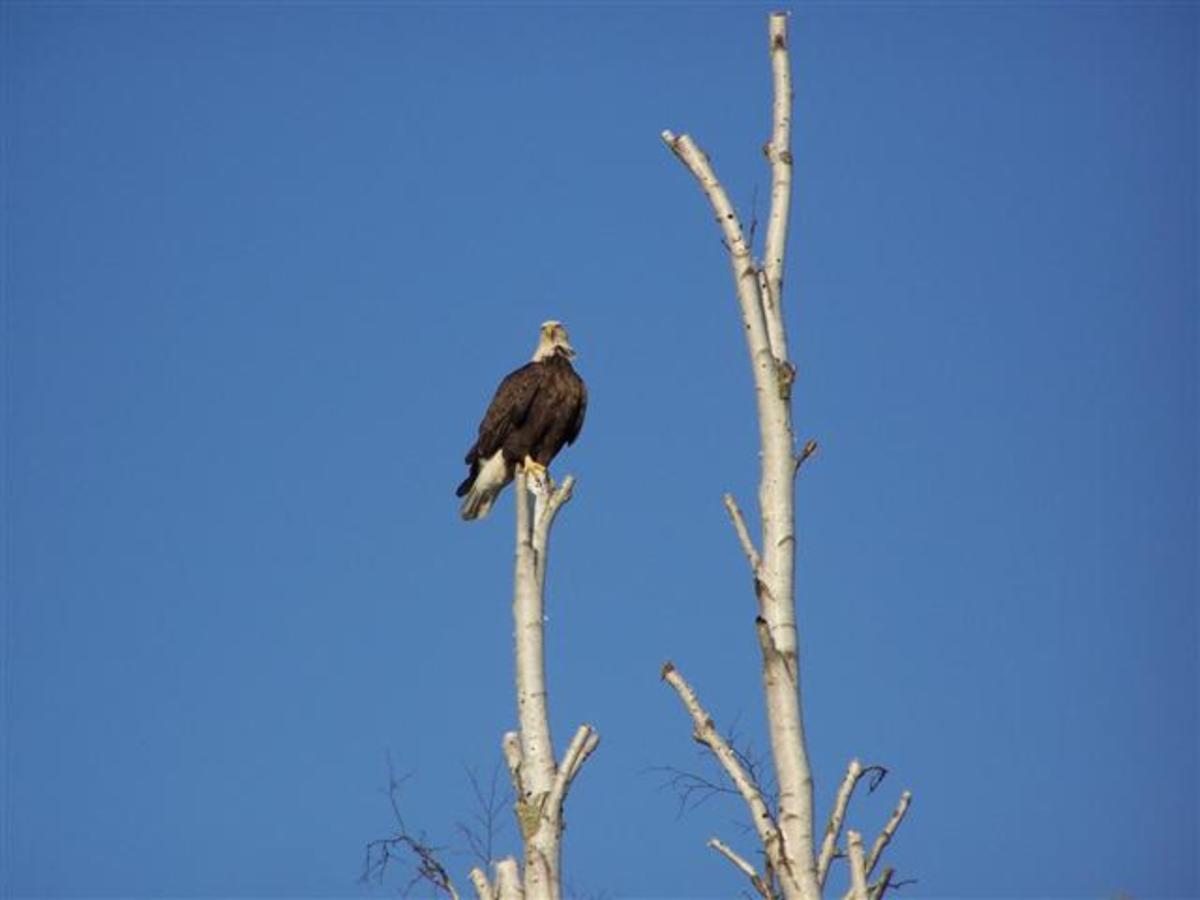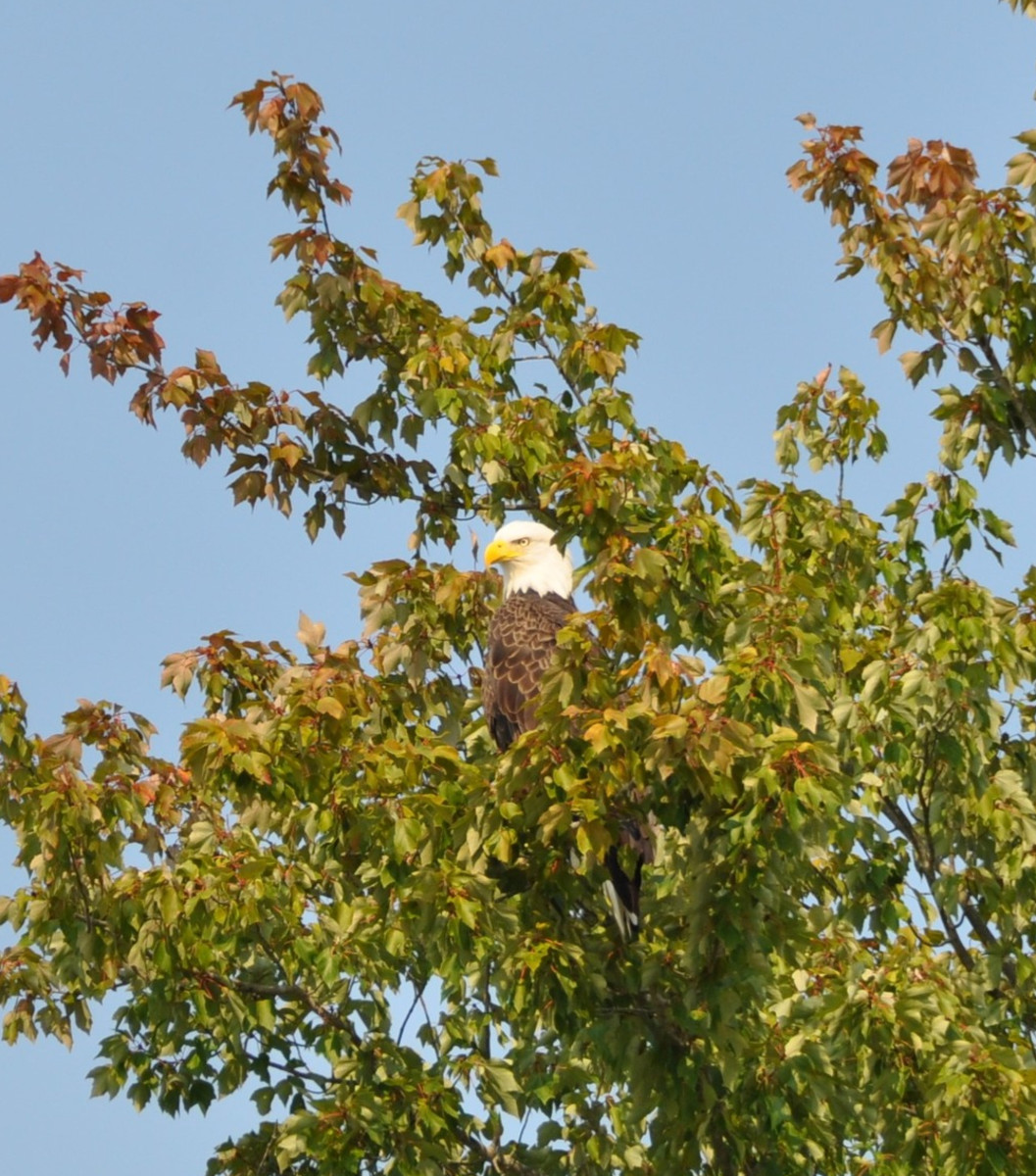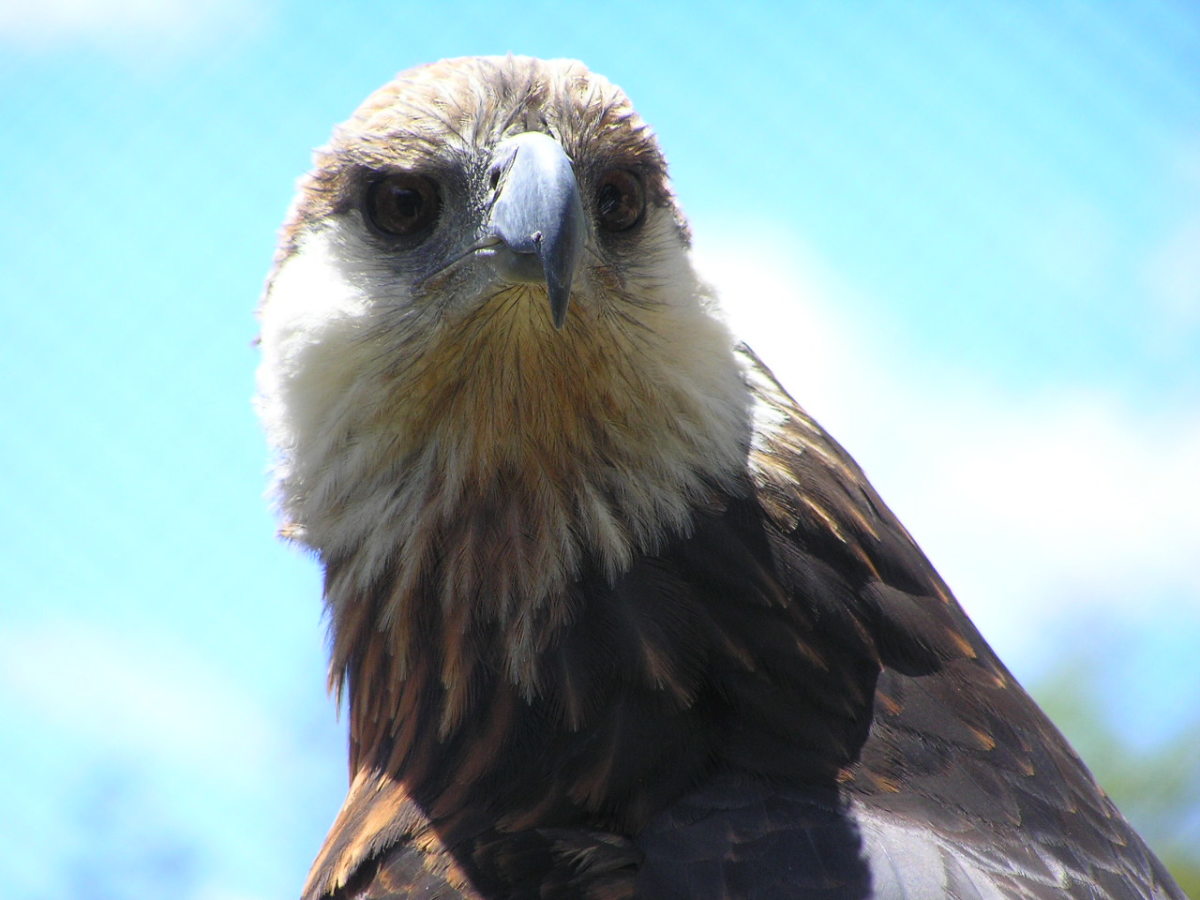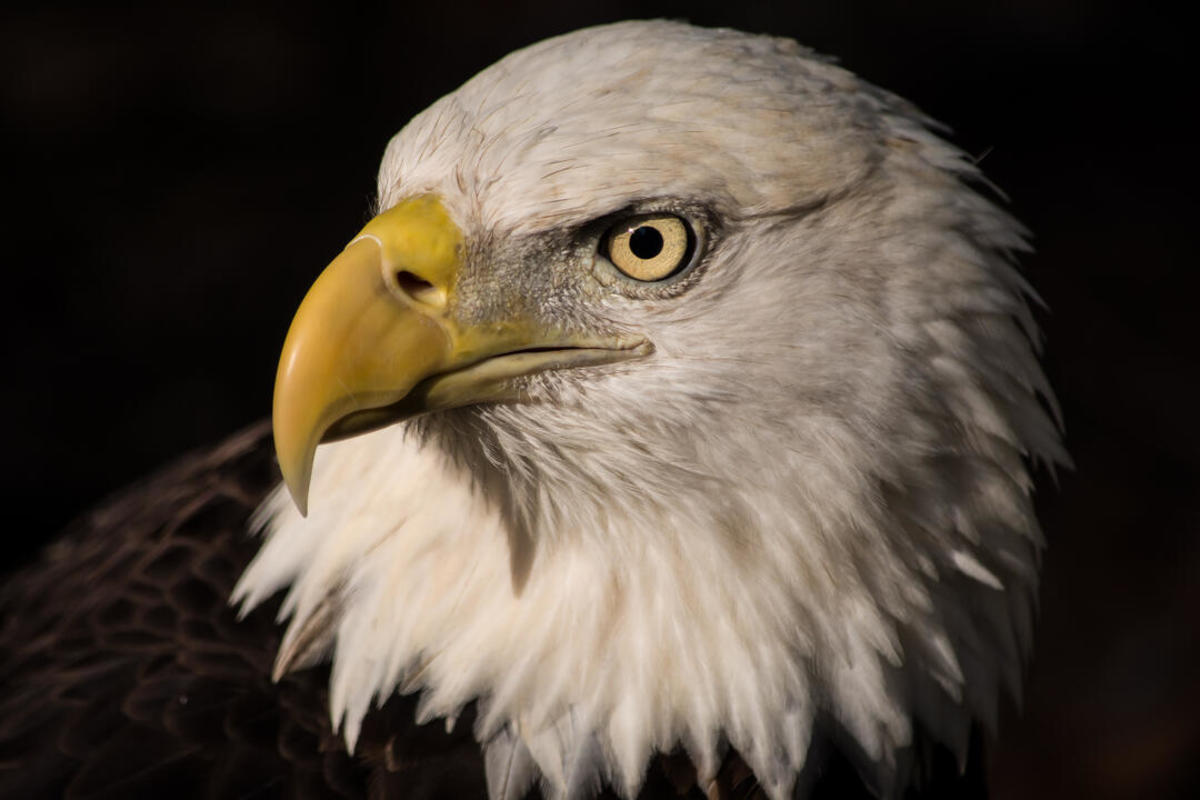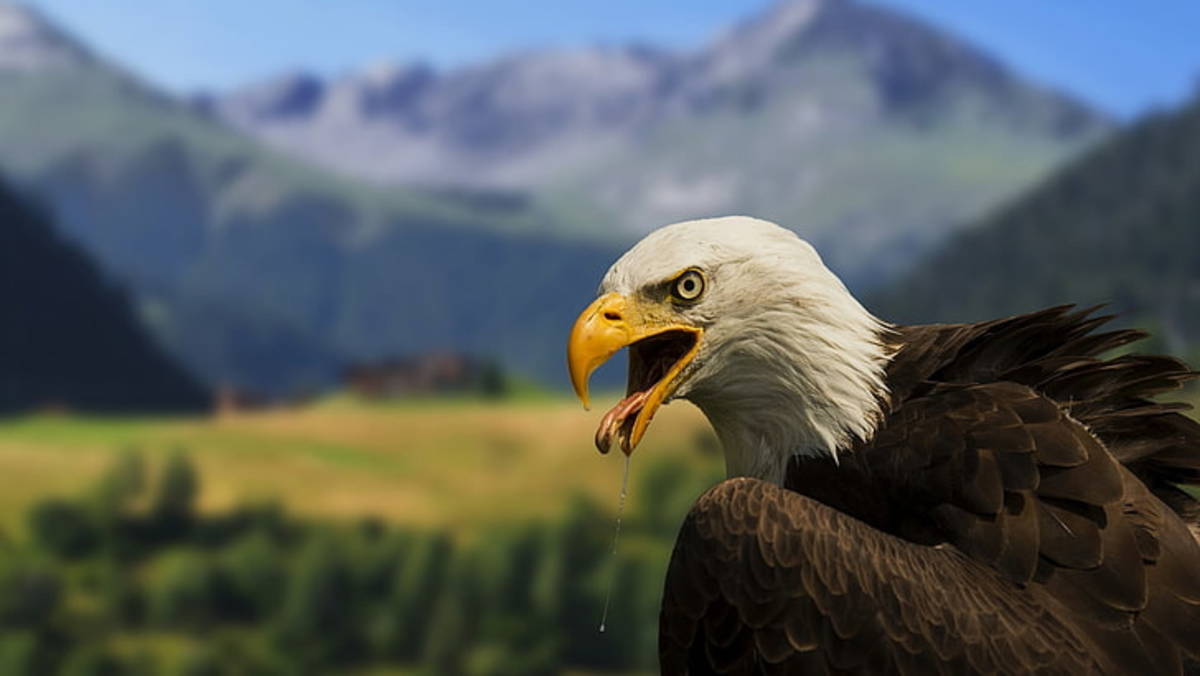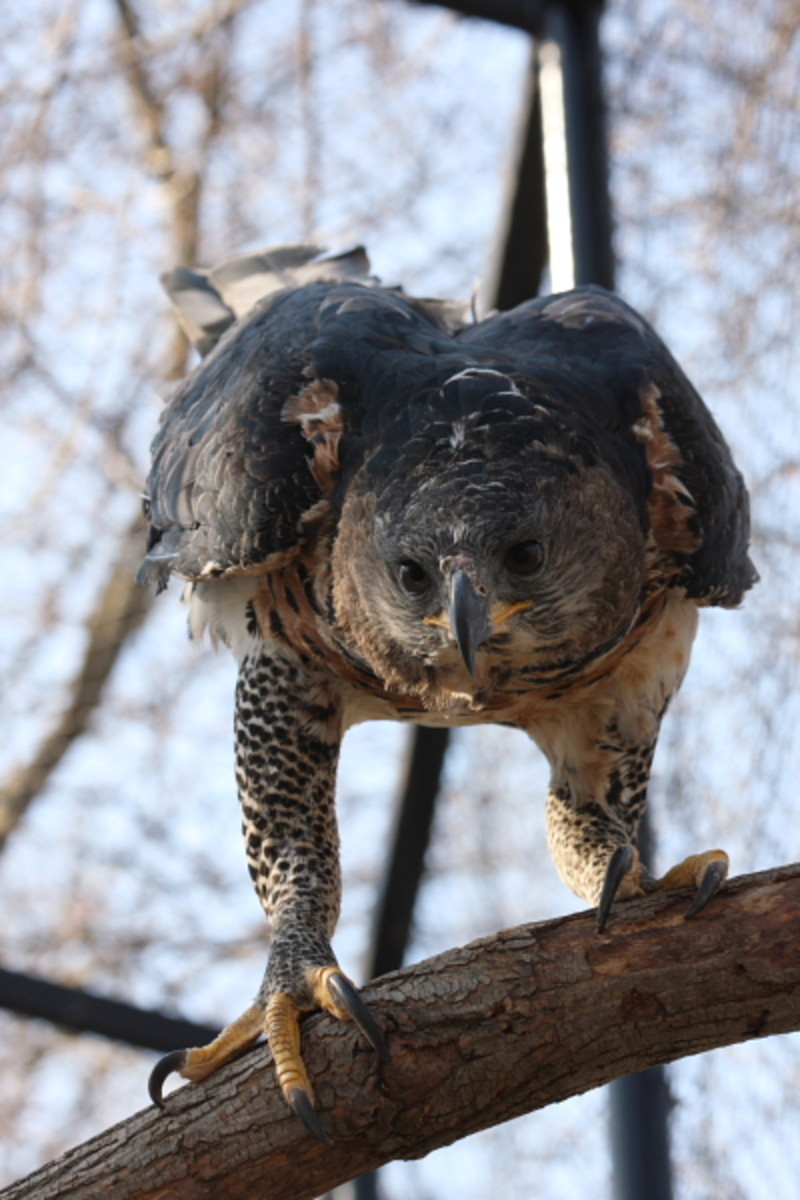The Bald Eagle - A Success Story
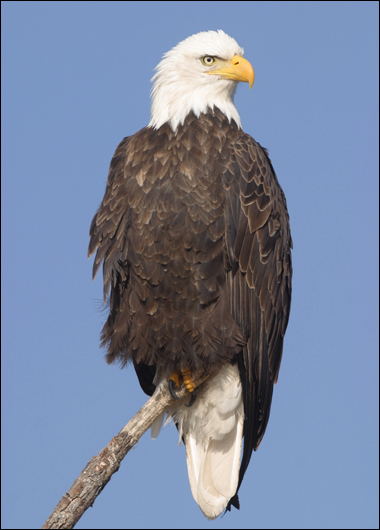
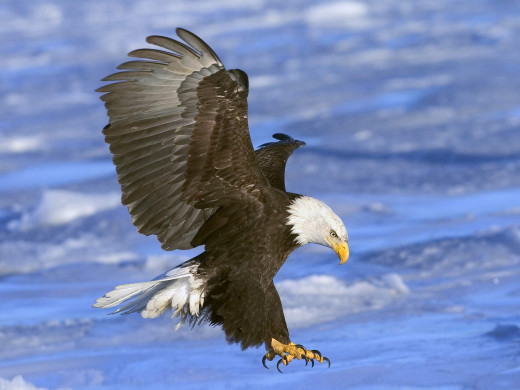
The beautiful bald eagle is a large bird of prey found in North America, also known as Haliaeetus leucocephalus (Greek), meaning hali – salt, aeetus – eagle, leuco – white, cephalis – head. They are most widely known as being the national bird of the United States of America and appear on the country seal, also found on the back of an American quarter coin or holding an olive branch on the one dollar bill. The symbol of the bald eagle stands for strength, courage and freedom.
Bald eagles are not really bald, the name is an older form of the name “white headed”. Bald Eagle adults are mainly brown with the distinctive white head and tail, bright yellow feet and a large, hooked yellow beak. Both sexes are the same coloring although the females are approximately 25 percent larger than males. Young or juvenile bald eagles are almost entirely brown and look very different from their parents. As they mature the beak and legs change to the distinctive yellow coloring and the head and tail turn white.
The typical wingspan of a Bald Eagle is between 1.8m and 2.3 meters, a body length of 70 to 102 centimeters and can weigh approximately 3 to 6.3 kilograms. Size of the birds varies due to location and those further away from the equator and tropics do tend to be larger. The largest Eagles tend to come from Alaska and the smallest are often found to be from Florida.
Bald eagles are found living near large lakes and reservoirs with plenty of fish and surrounded by forestry land. They are often seen during summer soaring high above lakes or hunting along coastlines and rivers during colder months. The main food source of the bald eagle is fish, although they will also hunt small birds and mammals when fish are scarce. They will swoop down from the skies and snatch fish from the water with their sharp talons at a speed of up to 120-160 kilometers per hour but have also been known to steal food from other birds.
In the latter part of the 20th century bald eagles were on the brink of extinction in the United States and were removed from the List of Endangered and Threatened Wildlife in the lower 48 states in June 2007 after successful attempts to conserve the breed and encourage safe breeding areas. If not for the hard work of many agencies and organizations the Bald Eagle would have remained on the list of endangered birds facing extinction, which currently predicts 1,200 bird species may be extinct in the next century.
Mainly solitary birds, the Bald Eagle is monogamous and will stay with the same mate during breeding season and re-meet to produce each year. Their nests are large, constructed from sticks and twigs, high above the ground in trees like a platform. The largest nest recorded was 3 meters wide and 6 meters high, it weighed more than 2 tons! Female Bald Eagles usually lay 2 or 3 eggs, which will be incubated for about 35 days. Both parents stay close to or on the nest to stop any predators from stealing the eggs or chicks. Chicks usually stay in the nest until 12 weeks of age when they start to venture out onto the branches near the nest, once they are able to fly they stay fairly close by and the parents will continue to feed them until they are independent.
Bald Eagles have a lifespan in the wild of approximately 20-30 years, and become sexually mature at the age of 5. In the wild they have faced a lot of threats from man including chemical pollutants, pesticides, hunting, and the use of DDT (dichlorodiphenyltrichloroethane) which was used as an insecticide from 1939 until it was banned in the United states of America in 1972. DDT did not affect the adult eagles but interfered with the bird's calcium metabolism, which made the bird sterile or unable to lay healthy eggs. Habitat decimation, hunting , power-line electrocution and collisions in flight were also blamed for the huge drop in Bald Eagle numbers.
Feathers from the Bald Eagle play a large part in some North American cultures, where they are seen as sacred. Some Native American tribes consider Eagles as spiritual messengers while others use an eagle claw as part of their regalia in pow wow ceremonies. Feathers are commonly used as fans, bustles or head dresses. Only people with certifiable Native American history and enrolled in a federally recognized tribe are allowed to legally obtain or possess Bald Eagle feathers for use in religious or spiritual ceremonies.
We are incredibly lucky to have been able to save the Bald Eagle from extinction. Many generations of people will be able to see and enjoy this majestic bird flying in their natural range, which covers most of North America, including parts of Canada, northern Mexico and all of the continental United states if we can keep bird populations up and numbers growing. Thanks to the efforts made by conservationists, wildlife rangers, supporters and those who cared enough to do something to preserve the Bald Eagle we must keep close watch on Eagle numbers, breeding pairs and their habitats to make sure the breed continues to flourish.
Habitat destruction affects many other bird species and animals as does climate change, pollution and man's attitude to the planet and everything in it. How nice would it be to read more positive things about how we are working together to save wildlife? Becoming more aware of the problems some animals are facing is a good start. Joining an organization or conservation scheme can be informative and fun. Meeting like minded people and sharing ideas can change the way you think about many subjects and not just the conservation and preservation of wildlife. Altering the way we think about food, fuel, saving energy and being kinder to the environment and all in it has very positive results. Saving the Bald Eagle is just the first step in making the world a better place.


